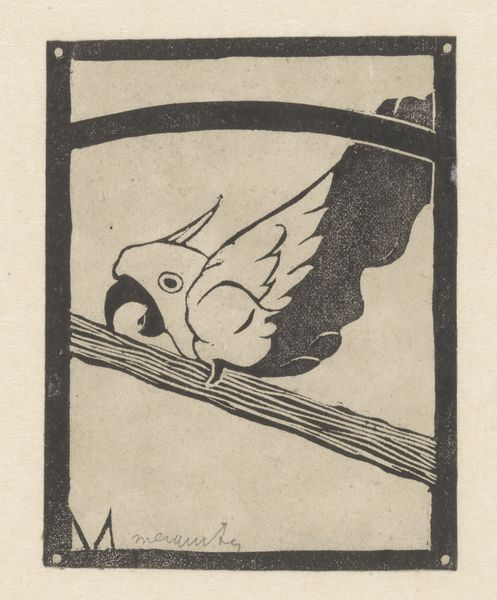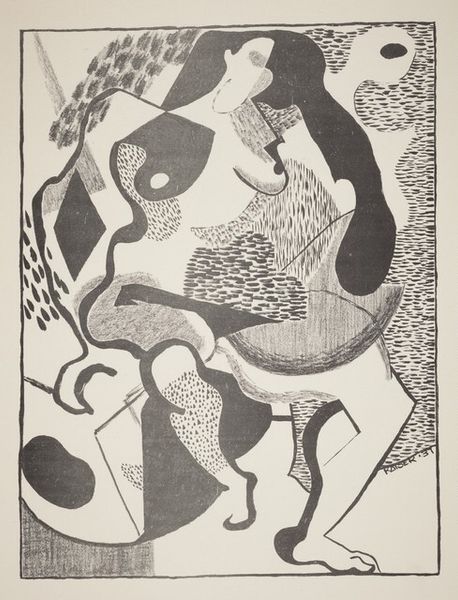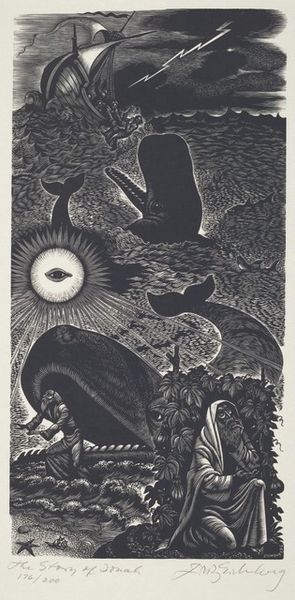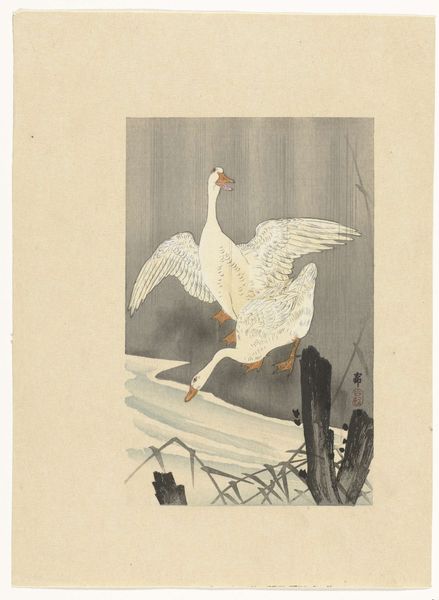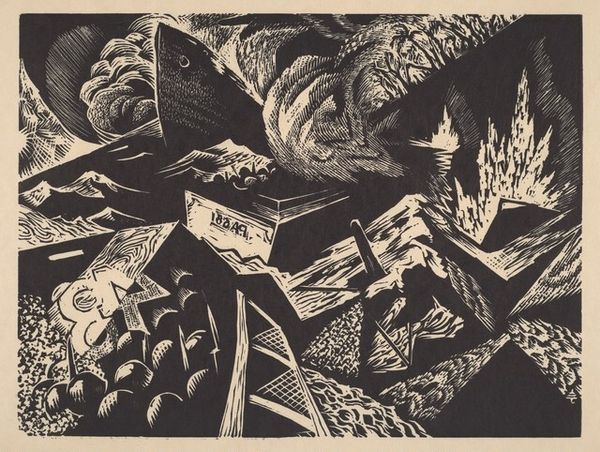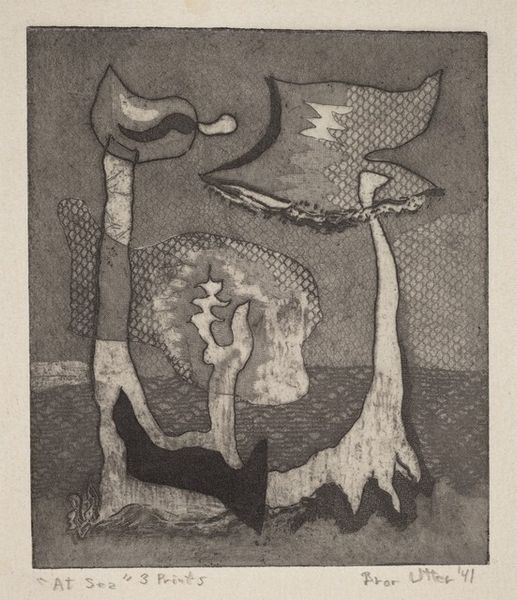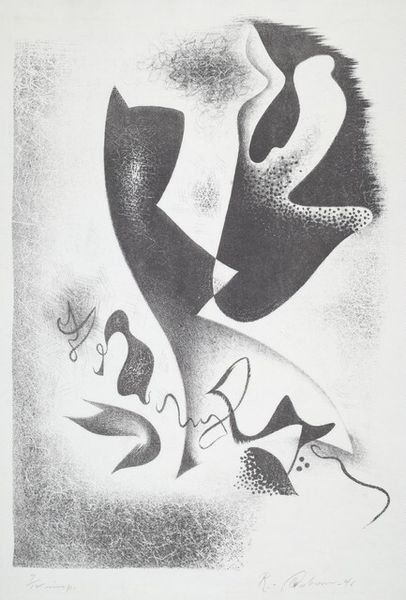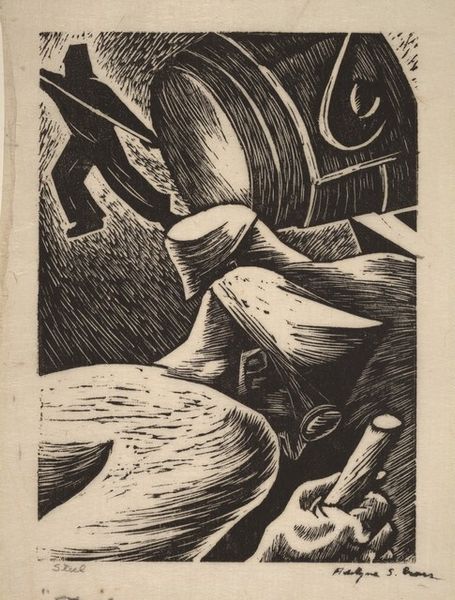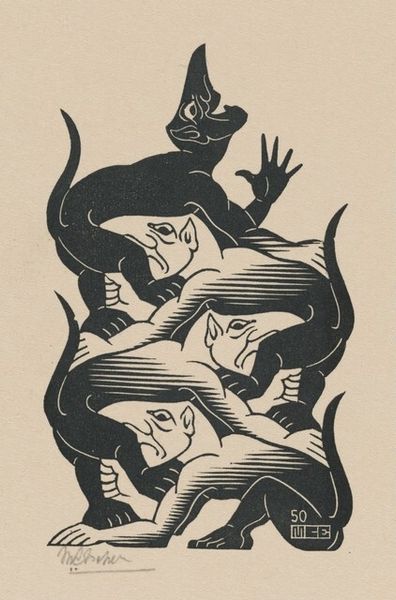
# print
#
caricature
#
caricature
#
folk-art
#
geometric
#
abstraction
#
surrealism
Dimensions: Image: 337 x 267 mm Sheet: 404 x 289 mm
Copyright: National Gallery of Art: CC0 1.0
Curator: Leon Bibel’s “Queer Birds,” created around 1939, is a print brimming with intriguing, abstracted forms. What strikes you first about this composition? Editor: Immediately, I’m drawn to the stark contrast and how it lends itself to an almost graphic quality. The geometric forms feel very purposeful. There is a flattening of space that feels very contemporary, almost Cubist in its abstraction, and then it resolves in the negative space created between the birds. Curator: Considering the late 1930s, it’s vital to recognize the rise of fascism and the persecution of marginalized groups, including queer individuals. This artwork could be seen as a coded expression of identity, a form of resistance against dominant societal norms. The very title challenges heteronormative expectations. Editor: Yes, and when considering the visual elements, the lines of the birds are distinct yet playful; there's a tension between realism and stylization. What looks to be a chicken coop, and even the geometric foliage, add to the complexity. Curator: Exactly. The chicken coop potentially symbolizes societal confinement, while the fractured geometric forms might represent fragmented identities, the struggle for recognition and wholeness within a repressive society. Look at the raised fist near the foliage. Editor: The scale feels a little off in the best way. The positioning and interaction among the birds seems to be hinting at something, a narrative that requires close observation to decode and to feel its emotional effect. Curator: Bibel, along with many other artists during the New Deal era, used art as a vehicle for social commentary. By choosing a seemingly innocuous subject—birds—he perhaps created a subversive space to address themes of difference and nonconformity. "Queer" could encompass not only sexual identity but also anything considered "odd" or "out of place." Editor: The deliberate juxtaposition of these fragmented forms, within a limited palette, compels the viewer to find order within this world the artist created. This is a surreal composition, a psychological portrait rendered through carefully balanced form. Curator: Thinking about intersectionality helps reveal the nuances in Bibel’s imagery. It invites us to consider not only sexuality but also class, race, and other aspects of identity that shape an individual's experience and societal position during this era. Editor: I see how your approach enhances one’s understanding and creates a far richer experience. I was drawn to the composition first and its dynamic push-pull quality but your perspectives add important context that elevate the piece, reminding us of its sociohistorical implications.
Comments
No comments
Be the first to comment and join the conversation on the ultimate creative platform.

